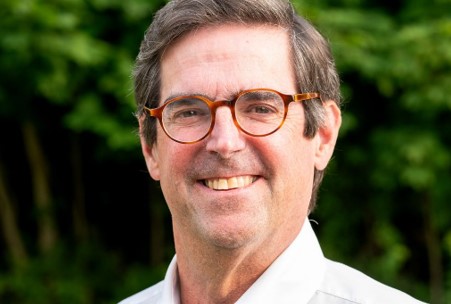
Debunking the Empire Center Analysis Attributing Nursing Home Covid-19 Deaths to DOH Policy
The following is excerpted from “Re-Examining the Cuomo Administration’s Nursing Home Policies During Covid-19”, by Paul Francis, September 5, 2024.
Four-and-a-half years after the Covid-19 pandemic began, critics of the Cuomo administration continue to make the false claim that guidance from the New York State Department of Health designed to facilitate discharges by hospitals of stable Covid-19 patients to nursing homes significantly contributed to nursing home deaths.
On Tuesday, September 10, 2024, former New York Gov. Andrew Cuomo is scheduled to testify at a hearing of the House Select Subcommittee on the Coronavirus Pandemic. The subcommittee chairman, Representative Brad Wenstrup, Republican of Ohio, said in a statement: “Andrew Cuomo owes answers to the 15,000 families who lost loved ones in New York’s nursing homes during the Covid-19 pandemic,” due to “potentially fatal nursing home policies.”
The “potentially fatal nursing home policies” Rep. Wenstrup is referring to were from an Advisory issued by the Department of Health on March 25, 2020. At that time, hospitals in New York were facing an unprecedented crisis as the COVID-19 pandemic quickly inundated hospitals with patients suffering from severe respiratory symptoms.
In the midst of this public health emergency, DOH issued the March 25 Advisory, which stated:
“No resident shall be denied re-admission or admission to the nursing home solely based on a confirmed or suspected diagnosis of COVID-19.” (emphasis added)
Republicans and other critics imply that the March 25 Advisory was responsible for significantly increasing the number of deaths of nursing home residents during the Covid-19 pandemic. Intuitively, it might seem logical that transferring patients who had been treated for Covid-19 in the hospital to nursing homes would increase the spread of infection to nursing homes and thus increase the number of deaths of nursing home residents. But upon closer examination, there are important factors that contradict this intuitive belief and no credible empirical evidence to suggest that these transfers did have a measurable effect on nursing home deaths from Covid-19.
There are two important facts that help account for why these transfers did not measurably increase deaths of nursing home residents and that help explain why there is no valid empirical evidence that they did. First, Covid-19 patients discharged from hospitals to nursing homes were unlikely to continue to be infectious, given that the discharges were made after the length of time that the scientific evidence suggests patients remained contagious. Second, all but six nursing homes in New York (out of more than 600) had already had a Covid-19 case among a resident or staff member at the time of the first admission of a Covid-19 patient from a hospital.
The myth that empirical evidence supports the conclusion that the March 25 Advisory was a major cause of nursing home deaths in New York is almost entirely attributable to an analysis published by the Empire Center, a small right-of-center think tank based in Albany, in February 2021. The actual claims of the Empire Center analysis were far more modest than the impression it created – and those claims do not hold up to scrutiny.
First, the Empire Center separately analyzed nursing homes located in downstate New York, where 93% of deaths of nursing home residents occurred, and nursing homes located upstate. The Empire Center found no statistically significant correlation in downstate nursing homes between admissions of Covid-19 patients from hospitals to nursing homes and deaths of nursing home residents.
Second, the Empire Center did find a statistically significant correlation in upstate nursing homes between admissions of Covid-19 patients from hospitals and deaths of nursing home residents. Only 27 out of 312 upstate nursing homes received such admissions during the 45-day period when the March 25 Advisory was in effect. Taken at face value, the Empire Center analysis suggested that the March 25 Advisory was “associated” with (they were careful to not say “caused by”) approximately 300 additional deaths in upstate nursing homes out of 9,110 deaths of nursing home residents statewide during the timeframe considered by the Empire Center analysis.
Even though the Empire Center had concluded that there was no statistical correlation between Covid-19 admissions from hospitals and nursing home deaths in downstate nursing homes, the Empire Center combined the correlated upstate data and the uncorrelated downstate data to suggest that statewide the March 25 Advisory may have led to “possibly more than 1,000 additional resident deaths.”
It is difficult to overstate the importance of the Empire Center Study in cementing the narrative that the March 25 Advisory significantly contributed to nursing home resident deaths. Predictably, despite caveats about data and causation in the Empire Center analysis, the press and critics of the Cuomo administration treated the analysis as scientific proof that the March 25 Advisory caused a significant number of Covid-19 deaths among nursing home residents – generally emphasizing the “possibly more than 1,000 deaths” statement rather than the lower “several hundred” deaths associated with the correlation analysis of data in upstate nursing homes.
The Empire Center analysis was reviewed by a data and policy analyst named John Bacheller, who criticized combining the downstate data with upstate data to generate a statewide correlation. It is common sense that it is inappropriate to combine a much larger data set, which has been determined not to be statistically significant, with a much smaller data set for which a statistically significant correlation has been found. Bacheller noted another methodological error in the Empire Center study, which reduced his estimate of the number of deaths of upstate nursing home residents associated with hospital transfers to a range of between 205 and 310.
However, both the Empire Center and the Bacheller analysis failed to take into account facility-specific confounding factors that render invalid the Empire Center correlation analysis between hospital transfers and deaths of residents of upstate nursing homes. Based on the public record, I found that just three upstate nursing homes with Covid-19 admissions from hospitals – Loretto Health and Rehabilitation Center and Bishop Rehabilitation and Nursing Center in Onondaga County, and Father Baker Manor in Erie County – accounted for 98 nursing home resident deaths. Crucially, these three nursing homes operated separate isolation units or facilities for Covid-19 patients, which undermines the argument that the transfers to these facilities spread the Covid-19 infection to other residents or that these deaths were attributable to infections spread by admissions of Covid-19 patients from hospitals. I suspect that if someone were to examine the other 24 upstate nursing homes that received transfers, they would find extenuating circumstances in some of those facilities as well.
My point is not to prove that not a single nursing home death upstate could be attributed to admissions of Covid-19 patients in transfer from hospitals. That is no more possible to prove than it is to prove that other lives were saved by freeing up additional hospital bed capacity. Rather, my point is that the Empire Center’s evidence of correlation is weak to begin with, and then fails to account for facility-specific factors which severely undermines the study’s purported correlation of admissions from hospitals and nursing home deaths.
Given that the Empire Center analysis found no correlation between admissions and deaths of residents in downstate nursing homes, and the inherent uncertainty of an empirical analysis upstate, the Empire Center should have done more to emphasize the part of its conclusion that stated that “the March 25 memo was not the sole or primary cause of the heavy death toll in nursing homes.” Instead, the Empire Center provided a numerical conclusion that, predictably, became weaponized by critics of the March 25 Advisory and the Cuomo administration.
Given the prevailing narrative, which takes as a given that the March 25 Advisory significantly increased the number of deaths of nursing home residents, it is notable that a number of official reports in New York did not express that view. These include the July 2020 DOH Report, which did not find a consistent relationship between admissions of Covid-19 patients from hospitals to nursing homes and nursing home deaths. New York Atty. Gen. Letitia James’s report in January 2021 noted that the March 25 Advisory was consistent with federal CDC guidance. The After-Action Report on Covid-19, commissioned by New York Gov. Kathy Hochul and released in June 2024, said that New York’s nursing home policies during the pandemic were “consistent with universal best practices in congregate care and accurately reflected the best understanding of the scientific community at the time they were issued.” And the Assembly Impeachment Investigation Report issued in November 2021 said: “We note that our investigation did not uncover evidence to suggest that the March 25, 2020 directive … increased the number of COVID-19 fatalities in nursing homes.”
It is difficult to be objective and dispassionate when the subject is the loss of life of vulnerable individuals such as nursing home residents. I hope the analytical tone of this Commentary does not suggest in any way that every life lost to the Covid-19 pandemic was not a grievous loss. I often think of a comment by a Swedish physician, who said, “To die alone and out of breath is a terrible death” – as indeed it was.
Opinions about the impact of New York State’s nursing home policies are strongly held and not easily susceptible to change. But as the late Sen. Patrick Moynihan is often quoted as saying, “You are entitled to your own opinion, but you are not entitled to your own facts.” One hopes that this maxim will be kept in mind as this controversial issue continues to be utilized to score political points.
Paul Francis is the Chairman of the Step Two Policy Project. He served as the Director of the Budget in 2007 and as the Deputy Secretary for Health and Human Services from 2015-2020, among other positions in New York State government, before retiring in May 2023.

